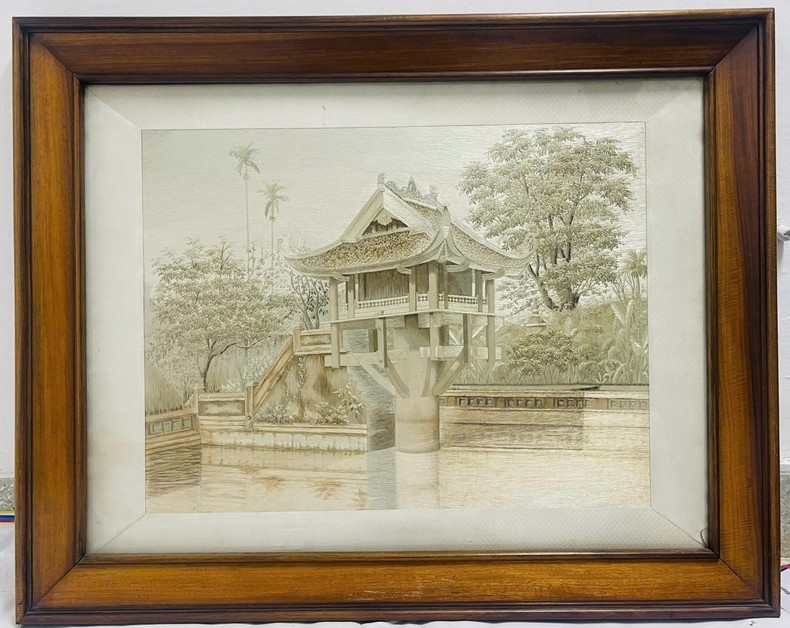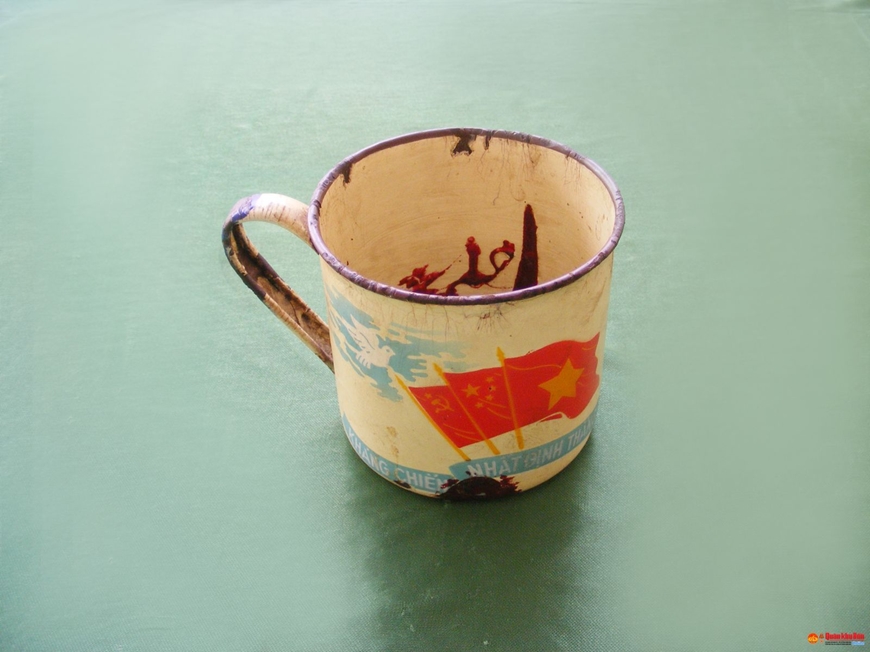- May 15, 2025
The Art of Giving: Lessons from Ho Chi Minh’s Remarkably Simple Life
A shirt patched with a dozen pieces of fabric, a meal of simple vegetables and tofu, a workspace with minimal furnishings - these were the defining images of President Ho Chi Minh's remarkably simple lifestyle.
Today, many people think success means having expensive stuff and giving costly gifts. But Uncle Ho's simple way of life teaches us something different. He showed that what really matters isn't how much we own. What matters is being genuine and thoughtful in everything we do.
A Leader's Dedication to Simplicity
President Ho Chi Minh embodied the spirit of mindful consumption long before it became a modern movement. His khaki shirt, tailored in 1959, remained in use until 1969. When it tore, he didn't replace it - instead, he asked his assistant to mend it, saying, "If it's still wearable, don't waste it." This simple statement reflects a profound philosophy that resonates across cultures and generations.

President Ho Chi Minh in his familiar, simple khaki outfit. Archival photo.
His modest lifestyle extended beyond clothing. Former Prime Minister Pham Van Dong, who frequently dined with Ho Chi Minh, recalled: "Meals consisted of just a few simple dishes. When eating, he never let a grain of rice fall, and his bowl was always clean afterward." His typical menu included boiled water spinach, tofu, braised fish, minced meat, or fermented eggplant—as humble as any Vietnamese family's meal of that era.
The President's office at the Presidential Palace reflected this same aesthetic. A small stilted house with just a few rooms, filled with natural light and fresh air. Inside, only a wooden bed, an old desk and chairs, some bookshelves, and a typewriter—all used for many years without pretension or luxury.
From Simplicity to Significance: The Gift-Giving Philosophy
What makes President Ho Chi Minh's approach to gift-giving particularly relevant today is how he transformed ordinary objects into extraordinary gestures. His gifts weren't valuable because of their price tags, but because of the thought, timing, and personal connection they represented.
1. Gifts of Love for Children
President Ho Chi Minh's special affection for children manifested in his thoughtful yet simple gifts. On New Year's Day 1960, when visitors came to offer New Year greetings, he warmly inquired about their families before presenting a large apple and a bag of candies to the nine-year-old son of the Indian ambassador. This simple gesture moved everyone present, demonstrating his genuine care and approachability.

President Ho Chi Minh celebrated the Mid-Autumn Festival with children from Hanoi and other countries on September 27, 1958. Archival photo.
During the Mid-Autumn Festival—Vietnam's children's celebration— President Ho Chi Minh annually sent letters and poems to children. His verses, though simple and easy to understand, overflowed with love and hope for the younger generation's future contributions to their country.
2. Honoring the Defenders: Gifts for Soldiers and Veterans
For the soldiers and veterans who sacrificed for their country, President Ho Chi Minh's gifts carried deep symbolic meaning. During the 1954 Dien Bien Phu campaign, he sent enamel-coated iron mugs printed with three flags and the words "Determined to fight, determined to win"—a powerful symbol that boosted morale before the historic battle.
>>>>>>>>> Read more: Dien Bien Phu 1954: The Historic Vietnamese Victory That Changed the World
Uncle Ho gifted this metal canteen to the soldiers during the Điện Biên Phủ campaign. Photo: baoquankhu4.com.vn
To wounded veterans, he sent practical gifts like clothing, honey, writing implements, and even donated his own monthly salary and meals. This personal sacrifice demonstrated leadership by example and genuine compassion.
3. Respecting Diversity: Gifts for Ethnic Minorities
President Ho Chi Minh's gifts to ethnic minorities showed his deep respect for Vietnam's cultural diversity.
Quynh Teu, a Co Tu ethnic minority member from Nam Dong, received silver jewelry, handkerchiefs, and cooking pots during a visit to the North. These items became family treasures, later donated to the Ho Chi Minh Museum as symbols of enduring gratitude. The family even adopted the surname "Ho" to honor their beloved leader.

The silver necklace that Uncle Ho gifted to Mr. Quỳnh Tếu during a visit to the North has now become a sacred family heirloom. In the photo, gong artisan Phạm Văn Kình – Mr. Quỳnh Tếu's second son – is holding the silver necklace while recounting the story of this special gift. Photo: Huế City Party Committee.
4. Diplomatic Gifts: Building International Friendships
In international relations, President Ho Chi Minh used gifts as sophisticated diplomatic tools.
In 1969, for the wedding of Lao Prince Sauryavong Savang, he sent embroidered blankets with dragon and phoenix motifs in bamboo containers—rejecting the Foreign Ministry's suggestion of gold and silver items. The Lao King was deeply moved by this culturally appropriate gift that showed profound understanding of Asian customs.
He also gifted exquisite embroidered paintings representing Vietnamese culture to international friends. The "Pine and Crane" painting given to Colonel Stephen Nordlinger (U.S. Office of Strategic Services) in 1945 included the English inscription "Best greetings from Ho Chi Minh Oct-1945." The colonel's family treasured this for nearly six decades before donating it to the Ho Chi Minh Museum.

The "Pine and Crane" embroidery is currently preserved at the Ho Chi Minh Museum. Photo: nhandan.vn
Another embroidered painting, "One Pillar Pagoda," was gifted by Uncle Ho to lawyer Francis Henry Loseby, who assisted him when he was detained by British authorities in Hong Kong in 1931. Lawyer Loseby's family preserved this painting and later returned it to the Vietnamese people. The practice of using exquisite handmade embroidered paintings as gifts not only showcases the skillfulness of the Vietnamese people but also serves as a way to promote the image of Vietnam and its people to the world.

The embroidered artwork depicting the "One Pillar Pagoda" was gifted to the Ho Chi Minh Museum by the Loseby family as a testament to their friendship. Image: nhandan.vn
Modern Applications: Living the Philosophy Today
President Ho Chi Minh's approach to gift-giving offers valuable lessons for our contemporary world:
1. Prioritize Personal Connection
Choose gifts based on the recipient's interests, needs, and personality rather than price tags. A thoughtfully selected book for a reader or a handmade item for someone who appreciates crafts carries more meaning than expensive but impersonal gifts.
2. Embrace Meaningful Over Material
Select gifts that tell a story or support a cause. Eco-friendly products, fair-trade items, or donations to charity in someone's name reflect values beyond materialism.
3. Respect Cultural Context
Consider the occasion, relationship, and cultural background when selecting gifts. This attention to detail shows sophistication and genuine care.
4. Focus on Presentation
How you give matters as much as what you give. A warm smile, sincere words, or the simple gesture of presenting a gift with both hands can transform even modest offerings into memorable moments.
Practical Gift Ideas Inspired by Ho Chi Minh's Philosophy

1. Practical Essentials
- Local specialties, artisanal tea or coffee
- Handmade foods or preserves
- Useful everyday items that improve daily life
2. Experience Gifts
- Event tickets or workshop vouchers
- Shared meals or activities
- Opportunities for learning or growth
- Handcrafted items with personal touches
- Customized gifts reflecting individual interests
- Photo albums or memory books
4. Community-Focused Gifts
- Charitable donations in the recipient's name
- Products from social enterprises
- Gifts that support local artisans or causes
- Eco-friendly products
- Items that reduce waste
- Gifts promoting sustainable living
The Lasting Legacy
President Ho Chi Minh's example teaches us that meaningful gift-giving isn't about impressing others with our wealth—it's about expressing genuine care through thoughtful choices. In our consumer-driven age, his philosophy offers a refreshing alternative: gifts that create connections, honor relationships, and reflect our values.
Whether it's a simple handwritten note, a carefully chosen book, or a donation to a cause someone cares about, the best gifts come from understanding and appreciating the recipient. As President Ho Chi Minh showed through his lifetime of thoughtful giving, the most precious presents are those that come from the heart, not the wallet.
In embracing this philosophy, we don't just give better gifts—we build stronger relationships, create lasting memories, and contribute to a more thoughtful, sustainable world. That's the true art of meaningful gift-giving, a timeless lesson from one of history's most beloved leaders.
Looking for meaningful gifts that embody these principles? Explore over 1000 thoughtful gift ideas at Chus.vn, where every gift begins with kindness and cultural appreciation.
























